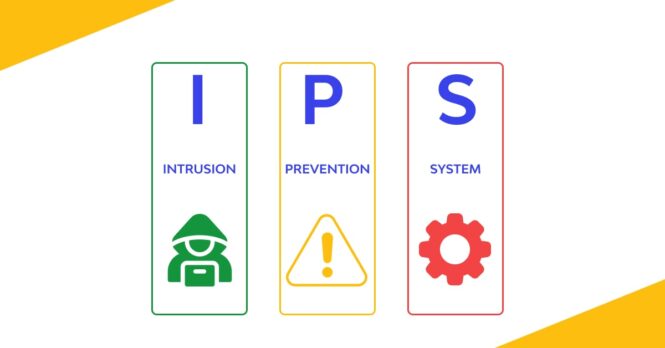As cyber threats continue to evolve and become more sophisticated, businesses need to be proactive in protecting their digital assets. One essential component of a robust cybersecurity strategy is having effective intrusion prevention and detection systems in place. This guest post aims to provide a comprehensive understanding of Intrusion Prevention Systems (IPS) and Intrusion Detection Systems (IDS) and their roles in cybersecurity.
Understanding Intrusion Detection Systems (IDS)

An Intrusion Detection System (IDS) is a device or software application that monitors network traffic or system activities for malicious activities or policy violations. The primary purpose of an IDS is to detect and alert administrators when an intrusion attempt occurs, allowing them to take appropriate actions to mitigate the risk. IDS can be classified into two main types: Network Intrusion Detection Systems (NIDS) and Host Intrusion Detection Systems (HIDS).
- Network Intrusion Detection Systems (NIDS): NIDS are strategically placed within a network to monitor and analyze network traffic. They use signature-based detection or anomaly-based detection to identify suspicious activities or patterns that may indicate an intrusion attempt.
- Host Intrusion Detection Systems (HIDS): HIDS reside on individual devices, such as servers or workstations, and monitor system files, log files, and processes for signs of malicious activity. HIDS can detect unauthorized access, privilege escalation, or other policy violations on the host system.
Understanding Intrusion Prevention Systems (IPS)

An Intrusion Prevention System (IPS) is an advanced form of IDS that not only detects potential threats but also takes proactive steps to prevent or block them. IPS solutions can be classified as Network Intrusion Prevention Systems (NIPS) or Host Intrusion Prevention Systems (HIPS), depending on where they are deployed.
- Network Intrusion Prevention Systems (NIPS): NIPS monitor network traffic in real-time and actively block or prevent malicious activities. They use deep packet inspection to analyze network traffic, identify suspicious patterns, and take appropriate actions, such as dropping packets, resetting connections, or blocking IPs.
- Host Intrusion Prevention Systems (HIPS): HIPS reside on individual devices and protects them from potential threats. They monitor system processes, file access, and network connections, and can take various actions, such as terminating processes or blocking connections, to prevent or mitigate threats.
Advantages of IDS and IPS
- Enhanced threat detection: IDS and IPS can detect a wide range of threats, from signature-based attacks to zero-day vulnerabilities. They can identify known threats, as well as detect anomalies that may indicate new or previously unknown attack vectors.
- Real-time monitoring: Both IDS and IPS provide real-time monitoring of network traffic and system activities, allowing organizations to respond to threats quickly and efficiently.
- Proactive prevention: IPS solutions offer the added advantage of proactively blocking or preventing threats, reducing the risk of successful attacks and minimizing the potential damage.
- Regulatory compliance: Many industries have regulations that mandate the use of IDS and IPS devices to protect sensitive data and maintain network security. Implementing these solutions can help organizations meet their compliance requirements.
- Enhanced visibility: IDS and IPS provide valuable insights into the security of an organization’s network and systems, enabling IT administrators to identify vulnerabilities, monitor for potential threats, and make informed decisions about their security strategy.
Challenges and Considerations
- False positives and negatives: IDS and IPS can generate false positives (alerting on benign activities) and false negatives (failing to detect actual threats). These issues can result in unnecessary alerts or undetected intrusions. It’s essential to fine-tune and regularly update IDS and IPS to minimize these issues.
- Performance impact: IDS and IPS can introduce latency and consume significant network resources, especially when deep packet inspection is used. Organizations must carefully consider the potential performance impact and choose solutions that balance security and performance.
- Management and maintenance: IDS and IPS require ongoing management and maintenance, including regular updates to signatures, rules, and configurations. Organizations must invest in the necessary resources and personnel to ensure their IDS and IPS solutions remain effective.
- Cost: Deploying and maintaining IDS and IPS solutions can be costly, particularly for smaller organizations. The cost of hardware, software, and ongoing maintenance should be factored into the decision-making process.
- Integration challenges: Integrating IDS and IPS solutions with other security tools and processes can be complex. Organizations must ensure that their chosen solutions are compatible with existing infrastructure and can be seamlessly integrated into their overall cybersecurity strategy.
Best Practices for Implementing IDS and IPS

- Conduct a risk assessment: Before deploying IDS and IPS solutions, organizations should conduct a thorough risk assessment to identify their most critical assets, potential vulnerabilities, and the most likely threats. This information will help guide the selection and configuration of IDS and IPS devices.
- Deploy multiple layers of defense: IDS and IPS should be used in conjunction with other security measures, such as firewalls, antivirus software, and encryption, to create a multi-layered defense strategy. This approach helps ensure that no single point of failure exists within the organization’s security infrastructure.
- Regularly update and fine-tune: IDS and IPS solutions must be regularly updated with the latest signatures, rules, and configurations to remain effective against emerging threats. Additionally, organizations should fine-tune their IDS and IPS settings to minimize false positives and negatives, ensuring that genuine threats are detected and addressed promptly.
- Monitor and respond to alerts: IDS and IPS are only as effective as the organization’s ability to monitor and respond to alerts. Organizations should establish clear protocols for responding to alerts, including escalation procedures and communication channels, to ensure that detected threats are addressed quickly and effectively.
- Train and educate staff: Ensuring that staff is well-trained and educated on cybersecurity best practices is essential for the success of any security strategy. Organizations should invest in regular training and awareness programs to help employees recognize potential threats, adhere to security policies, and contribute to the organization’s overall security posture.
Conclusion
Intrusion Detection Systems (IDS) and Intrusion Prevention Systems (IPS) are critical components of a comprehensive cybersecurity strategy. By detecting and preventing a wide range of threats, these devices can help organizations protect their digital assets and maintain network security. However, it’s essential to consider the challenges and considerations associated with implementing IDS and IPS solutions, including the potential performance impact, management and maintenance requirements, and integration challenges.
By following best practices for implementing IDS and IPS, organizations can ensure that they are well-equipped to detect and respond to the ever-evolving landscape of cyber threats. Ultimately, the key to effective cybersecurity lies in a multi-layered defense strategy that combines IDS and IPS with other security measures, ongoing monitoring and response, and staff training and education.
 Imagup General Magazine 2024
Imagup General Magazine 2024



